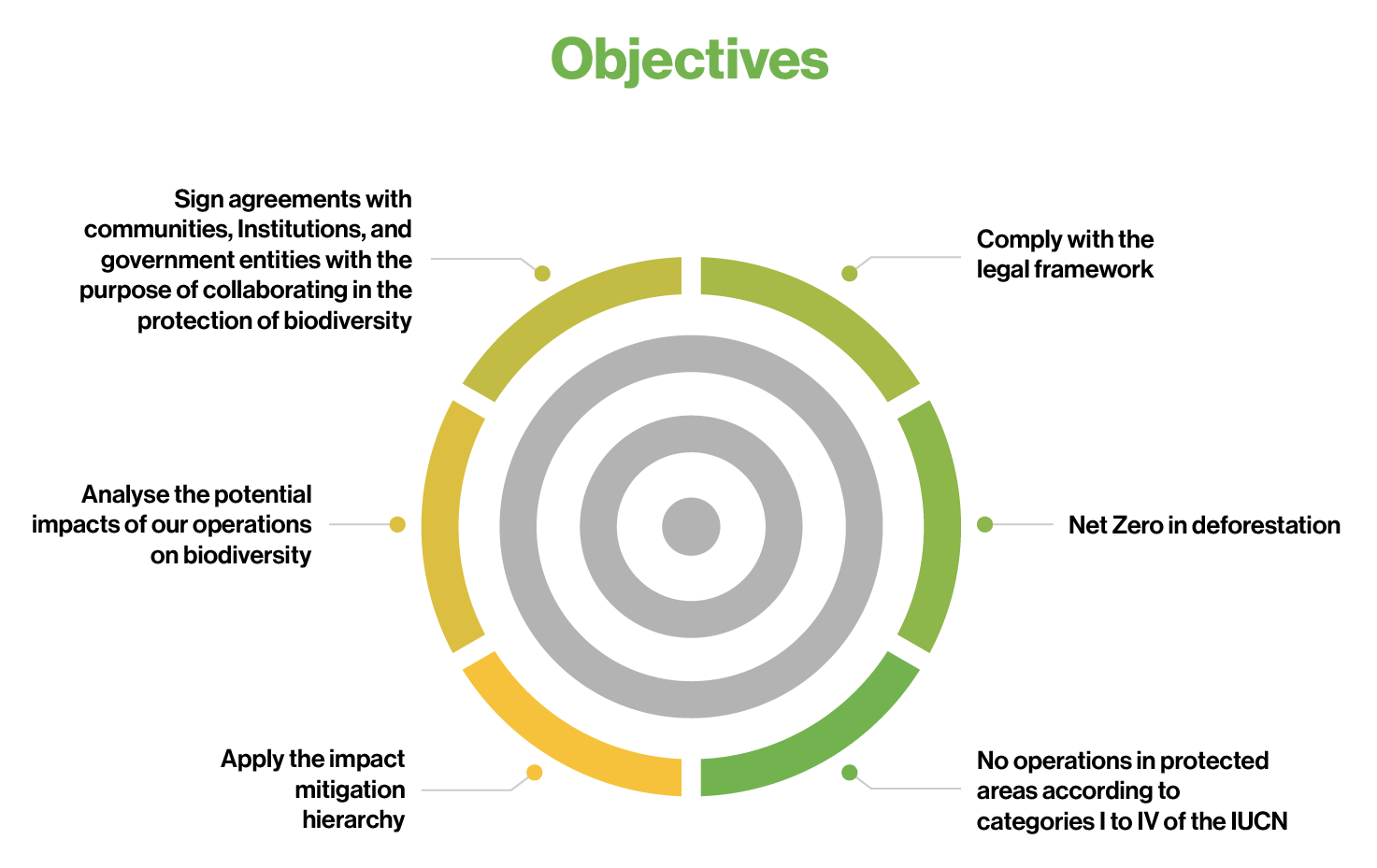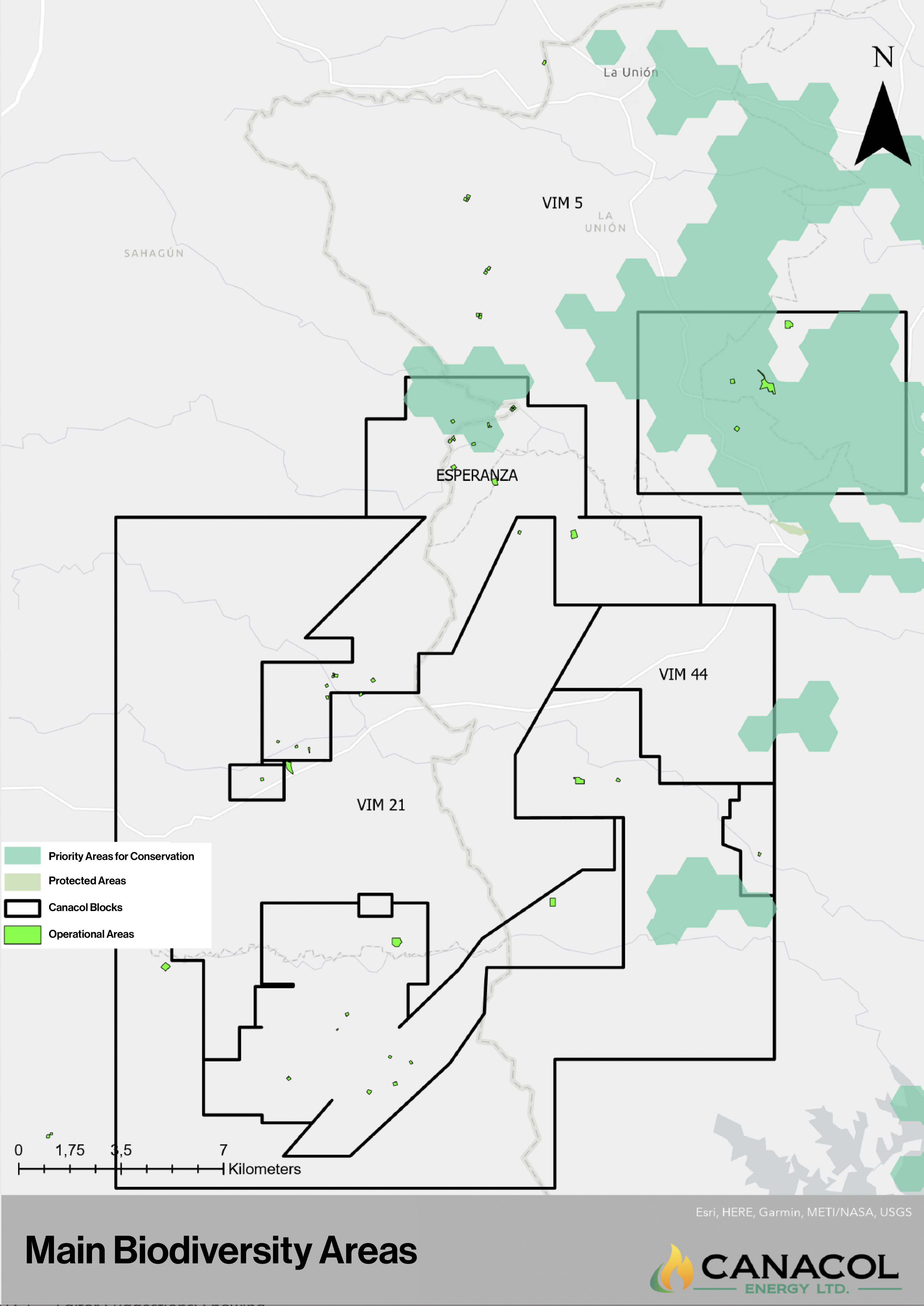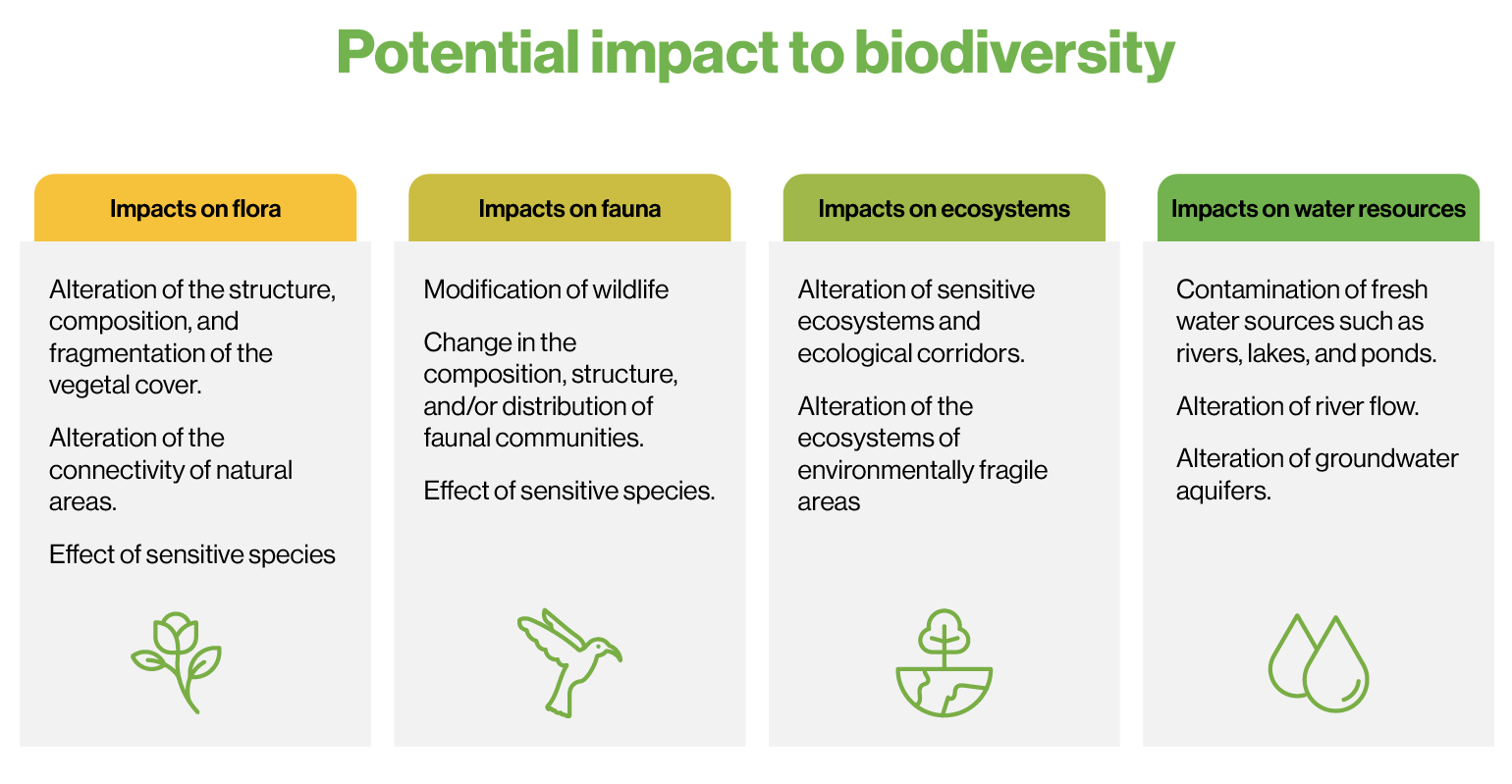Biodiversity
Canacol assumes its responsibility for conserving ecosystems and protecting biodiversity within its areas of operation. The Company actively manages nature-related risks and opportunities, contributing to a clean and responsible energy transition in Colombia, in alignment with the United Nations Sustainable Development Goals.
Since adopting its Environmental Policy, Canacol has focused its efforts on conserving local ecosystems and their biodiversity, reaffirming its commitment to sustainability and sound environmental management. The Company strictly complies with Colombian environmental regulations, ensuring the protection of natural habitats where it operates.
Canacol’s operations are carried out under a strong commitment to environmental preservation and biodiversity protection. Accordingly, the Company does not conduct activities in protected areas categorized as I to IV by the International Union for Conservation of Nature (IUCN), nor in UNESCO World Heritage Sites. This approach minimizes impacts on sensitive ecosystems and contributes to the preservation of natural capital, in line with international best practices in sustainability. Furthermore, the Company avoids the use of tree species classified as Endangered (EN) or Critically Endangered (CR) according to the IUCN Red List, following a Net Zero Deforestation approach.
As part of its transparency and sustainability strategy, Canacol published in 2024 the results of its first pilot exercise using the TNFD framework. This assessment identified impacts, dependencies, risks, and opportunities through the application of the LEAP methodology in five prioritized operating contracts: Esperanza, SSJN-7, VIM-33, VIM-5, and VMM-45.
This analysis reinforces the measures implemented through Canacol’s Biodiversity Management and Conservation Program, which is structured around four strategic lines of action:
- Promotion of biodiversity conservation
- Green initiatives
- Environmental education for life
- Protection of water sources
Our Objectives
Canacol has set the following objectives in relation to biodiversity.
Biodiversity Commitment
Our biodiversity commitment reflects our commitment to implementing tangible measures to safeguard the ecosystems within which we operate. We are committed to fostering sustainable practices and forging collaborative partnerships with local communities, all aimed at positively contributing to the well-being and equilibrium of the shared ecosystems.
To learn more about our biodiversity commitment, please refer to it here
Biodiversity Risks
The Organization has established a Risk and Opportunity Management system with the primary goal of anticipating and addressing risks and opportunities that could either negatively or positively impact its strategic objectives. This system therefore facilitates informed decision-making and promotes the efficient use of resources, thus promoting Business Excellence.
Consequently, Canacol has conducted an analysis of biodiversity-related risks. The primary risks identified included alterations in aquatic fauna and the modification of water habitats. Additionally, lesser-scale impacts on terrestrial fauna and flora were identified. To mitigate these risks, the following measures were undertaken:
- Execution of conservation agreements.
- Inventory of flora and fauna before commencing operations.
- Signage for protected zones or species.
- Rescue and transfer of vascular epiphytes (mosses, lichens, tree orchids).
- Measures to minimize forest harvesting.
- Performance of very strict environmental management zoning, excluding any intervention in areas of high importance for biodiversity.
- Temporary diversion of land fauna from immediate operational areas.
- Prohibition of hunting and fishing in our operational facilities.
Biodiversity Assessment
In 2023, we conducted an analysis of the potential effects of our operations on biodiversity, encompassing considerations for flora, fauna, ecosystems, and hydrobiological resources. The insights drawn from this assessment enabled our specialists in environmental sciences, social investment, and engineering to develop mitigation strategies and implement action plans. This analysis was conducted on the area in which we have operational activity for 2023, the prioritized areas were 87.4 hectares.
For further details regarding biodiversity assessment, please refer to the 2023 ESG Report.
Mitigation Policy
Aligned with our commitment to sustainability and environmental stewardship, Canacol has implemented a series of mitigation activities designed to counteract adverse impacts and promote a more balanced and healthier environment. These initiatives range from the establishment of conservation agreements with neighboring communities, reforestation efforts, community engagement through conservation best practices and agroforestry projects, advocacy for the conservation of regional flora and fauna through training and community workshops, and the restoration of damaged or depleted areas as per contractual commitments with the ANH. We are determined to serve as catalysts of positive change, actively engaged in minimizing our ecological impact and enriching the well-being of our communities.
For additional information concerning our mitigation actions, please refer to the ESG Report.




